 As I lay me down here at home, cold-turkey off the meds, there’s not much to report in the way of foraging. Luckily I have my wild food stash and a few things to mention that didn’t get mentioned in the fall.
As I lay me down here at home, cold-turkey off the meds, there’s not much to report in the way of foraging. Luckily I have my wild food stash and a few things to mention that didn’t get mentioned in the fall.
A few months ago while in Portland for some book events I made a side-trip an hour southwest to the Willamette Valley in search of a coveted wild edible to bring back home. It’s the sort of edible that inspires otherwise circumspect men to spend stupid sums of money and otherwise intelligent women to sleep with stupid men. At least in Europe that’s the case, where the truffle has enjoyed a long, colorful history as a pricey luxury item and sought-after aphrodisiac.
Truffles are subterranean fungi, many of which emit pungent scents to attract the animals that will dig them up, eat them, and subsequently spread their reproductive spores.  Whether or not these aromas are ever scientifically proven to heighten arousal we can be sure that truffles will continue to fetch top dollar for their culinary uses. The white “Alba” truffles of Italy and black “Perigord” truffles of France have been the choice of royalty for centuries. Here in North America, specifically in the low-elevation Douglas-fir forests of the Pacific Northwest, we have our own edible truffles that don’t require a fancy coat-of-arms or family escutcheon to possess. While not as renowned as their European counterparts, American truffles can stir the same primal passions when used correctly.
Whether or not these aromas are ever scientifically proven to heighten arousal we can be sure that truffles will continue to fetch top dollar for their culinary uses. The white “Alba” truffles of Italy and black “Perigord” truffles of France have been the choice of royalty for centuries. Here in North America, specifically in the low-elevation Douglas-fir forests of the Pacific Northwest, we have our own edible truffles that don’t require a fancy coat-of-arms or family escutcheon to possess. While not as renowned as their European counterparts, American truffles can stir the same primal passions when used correctly.
And there’s the rub. The fact is, most American diners—most American chefs, one could argue—don’t know what a good truffle tastes like, or worse (in the case of the chefs), they aren’t scrupulous enough to know when to not serve the expensive fungus mocking them in the walk-in.  In this country unripe truffles are routinely bought and sold and then passed up the food-chain until they reach restaurant patrons who scratch their heads wondering what all the fuss is about. I’ve been served a very unspectacular Perigord black truffle by one of Seattle’s finest restaurants, with the flourish of a waiter brandishing his mandoline at table. The theatric gesture didn’t change the fact that the truffle wasn’t ripe.
In this country unripe truffles are routinely bought and sold and then passed up the food-chain until they reach restaurant patrons who scratch their heads wondering what all the fuss is about. I’ve been served a very unspectacular Perigord black truffle by one of Seattle’s finest restaurants, with the flourish of a waiter brandishing his mandoline at table. The theatric gesture didn’t change the fact that the truffle wasn’t ripe.
American truffles seem to suffer even more from ill-use, perhaps because they’re cheaper and easier to obtain. A small group of local truffle boosters has been trying to change this, but until the public is more educated—from commercial forager to diner—our home-grown truffles will continue to be viewed as vastly inferior to their European cousins.  Which is too bad, because good, ripe truffles from both continents can elevate a meal from excellent to sublime.
Which is too bad, because good, ripe truffles from both continents can elevate a meal from excellent to sublime.
As I drove southwest from Portland, I thought about my last meal of truffles. It had been just a few days earlier in San Francisco’s North Beach neighborhood, where a friend took me to his favorite trattoria. We ordered plates of linguini with cream sauce. The waiter appeared with a scale and a large white Alba truffle, which he weighed first, then shaved onto our pasta, then weighed again. Like cocaine, truffles are priced by the gram. Fortunately this truffle that had traveled thousands of miles was in top form and our meal, so simple in appearance, was superb. The smell of the truffles rose up in the steam of the dish. Each bite seemed to offer the possibility of a secret revealed. We took in these ineffable pleasures and washed them down with woodsy Piedmontese Barbera…
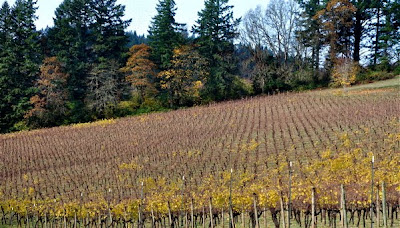
Autumn colors in neat geometric patterns across the Dundee Hills snapped me out of my reverie. I wasn’t in Italy, nor San Francisco. Here in the Willamette Valley the crush of Pinot Noir and Chardonnay had finished and the leaves were turning pretty shades of yellow and orange. In the town of Dayton I pulled into the historic Joel Palmer House to meet my guide.
Jack Czarnecki, former owner of the Joel Palmer House (his son is now the chef-owner), is about the closest thing this country has to a truffle expert, and he’s using his expertise to produce truffle oil. Like the proverbial lightning in a bottle, truffle oil is a way to capture the fleeting flavors of truffles and use them year-round; unlike lightning in a bottle, it can really be done. But it should be noted that Jack’s all-natural truffle oils are a far cry from the chemical concoctions devised in scientific labs by most of the other so-called truffle oil manufacturers.
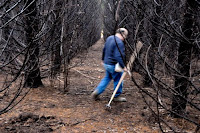
A few words about truffle oil. As wild foods, in particular fungi, continue to land on plates served by high-end restaurants across the land, there’s been a commensurate increase in the use of truffle oil. Truffle oil is the sort of fancy ingredient that can spruce up a menu and lend extra gravitas to an establishment looking for culinary plaudits. Which would you pay more for? Wild Mushroom Ravioli or Ravioli of Porcini and Chevre drizzled with Truffle Oil… But what is truffle oil? According to Daniel Patterson in his now-infamous New York Times rant, most truffle oils are a fraud—molecular creations that don’t actually have a shred of truffle in their recipes.
You see, the truffle’s complex aroma has been sequenced out by chemists so that it’s now just a series of numbers and letters, an equation. Even the French and Italian oils are guilty of the deception, and though some will include shavings or pieces of truffle in the bottom of the bottle for an implied authenticity, the actual flavor has been created in a test tube.
Jack hasn’t taken the short cut. His truffle oils are the real deal. And for this reason, he needs to forage an enormous quantity of truffles each season. I was only too glad to help. With his friend Tony joining us, we set out for the truffle ballpark—in this case, a managed stand of young Douglas firs on private property where Jack has worked out a barter arrangement that is typical between truffle hunters and landowners. To the untrained eye the forest looked like a rather uninviting monocrop. To the experienced truffler, it looked like the strike zone: young, single-aged conifers grew in rows for easy walking and a thick carpet of duff covered the ground underfoot. Using garden rakes, we gently raked back the layer of duff to expose little white tubers up to the size of golf-balls: Oregon winter white truffles, Tuber oregonense.
It was still a couple weeks early and most of the truffles didn’t yet have their typically pungent smell. We collected them just the same. Jack explained that it was possible to ripen the truffles if done with patience and an understanding of the truffle’s life-cycle.
I came home with a couple pounds of white truffles. Following Jack’s instructions, I washed the dirt off each truffle with a quick blast of tap water and then used a toothbrush to clean the exterior. This took some time. Then I swaddled the truffles in paper towels, layering them in Tupperware and sealing the lid before popping into the fridge. The idea is to keep them cool and dry so they can ripen just as they would in the ground. The truffles sweat so you need to change the damp towels every couple days.
 Most of a truffle’s flavor and aroma comes in the form of gases emitted by the truffle which can then be absorbed in fats. This is why you never cook truffles at high temperature; the fragile gases get cooked out. The best way to serve truffles is to shave them thinly over hot food on the plate, not in the pan, and allow the flavors to soak in. Scrambled eggs, melted butter, and cream sauces are the perfect vehicles.
Most of a truffle’s flavor and aroma comes in the form of gases emitted by the truffle which can then be absorbed in fats. This is why you never cook truffles at high temperature; the fragile gases get cooked out. The best way to serve truffles is to shave them thinly over hot food on the plate, not in the pan, and allow the flavors to soak in. Scrambled eggs, melted butter, and cream sauces are the perfect vehicles.
Unfortunately most of my individual truffles never ripened as much as they would have in the ground. My ripest specimens got thinly sliced into dishes such as homemade Tagliatelle with Alfredo Sauce to which they added a noticeable hint of truffle, though not as much as I would have preferred.  But I had another card up my sleeve: I made a couple pounds of truffled butter, a better choice for my slow-ripening truffles. I sealed sticks of organic sweet cream butter into Tupperware with a few ounces of truffles per stick and left them in the fridge for a few weeks. By the end the truffles were decomposing, but over the course of those weeks they emitted enough of their fabled gases to flavor the butter. (Oh, and by the way, if you ever see truffled butter that’s shot through with pieces of ground-up truffle, know that this is either a misconception on the maker’s part or a gimmick. It’s all about the gases.) The truffled butter is wonderful melted over pasta or simply spread on toast.
But I had another card up my sleeve: I made a couple pounds of truffled butter, a better choice for my slow-ripening truffles. I sealed sticks of organic sweet cream butter into Tupperware with a few ounces of truffles per stick and left them in the fridge for a few weeks. By the end the truffles were decomposing, but over the course of those weeks they emitted enough of their fabled gases to flavor the butter. (Oh, and by the way, if you ever see truffled butter that’s shot through with pieces of ground-up truffle, know that this is either a misconception on the maker’s part or a gimmick. It’s all about the gases.) The truffled butter is wonderful melted over pasta or simply spread on toast.
This was my first experience digging white truffles. In general I’d say they’re stronger than black truffles. Black truffles have a distinctly different flavor (fruitier, less garlicky) and are supposedly harder to find, though I’ve had some luck foraging them in recent years. Both whites and blacks can make a special accompaniment to a meal when properly ripe, and whether or not our local truffles deserve comparison with European varieties is besides the point. Truffles are a treat wherever they are handled with skill.
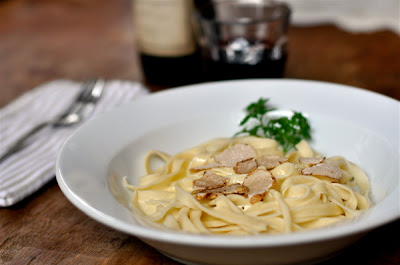
Like this:
Like Loading...
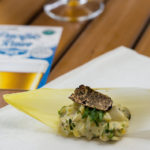 NOW ENTERING its 14th year, the non-profit Oregon Truffle Festival‘s mission is to educate the public about native-grown truffles in the Willamette Valley. With events and workshops tailored to truffle cultivators, foragers (and their dogs!), chefs, epicures, and the merely curious, the festival celebrates a burgeoning culinary industry.
NOW ENTERING its 14th year, the non-profit Oregon Truffle Festival‘s mission is to educate the public about native-grown truffles in the Willamette Valley. With events and workshops tailored to truffle cultivators, foragers (and their dogs!), chefs, epicures, and the merely curious, the festival celebrates a burgeoning culinary industry.

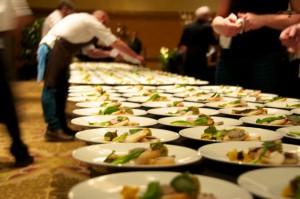













.jpg)

































